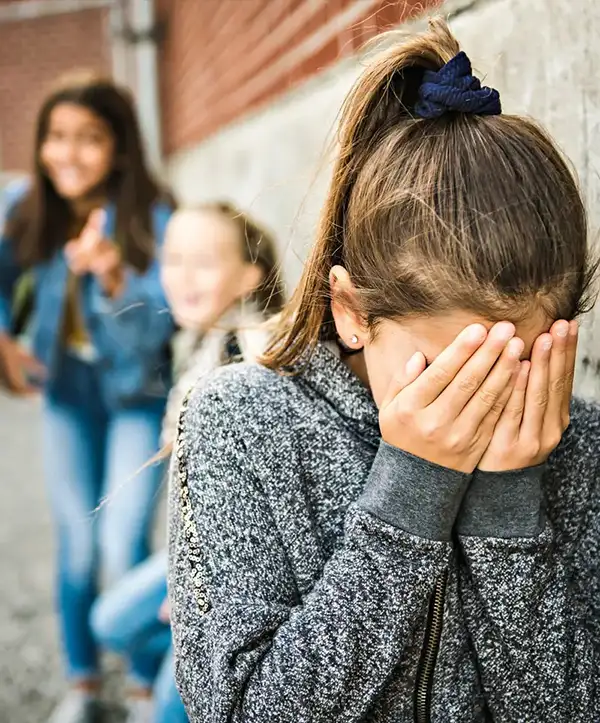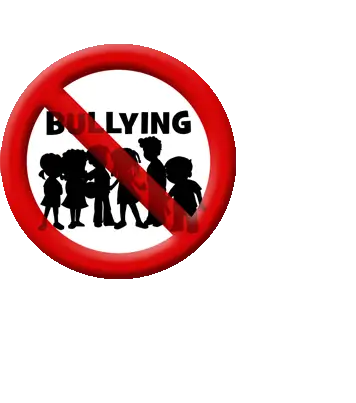Understanding, Addressing, and Preventing Harmful Behavior
Every October, National Bullying Prevention Month brings attention to a pervasive issue affecting children, teens, and even adults across the world. Bullying can have devastating consequences, from emotional scars to lasting psychological effects. Recognizing the seriousness of bullying and understanding how to prevent and address it is crucial for creating a safer, more supportive environment for everyone. This month serves as a reminder to foster kindness, empathy, and respect in schools, workplaces, and communities.
What Is Bullying?
At its core, bullying is an intentional, repeated behavior designed to harm, intimidate, or coerce someone. It involves an imbalance of power, where the person bullying uses physical strength, social status, or personal information to control or harm their target. Bullying can take various forms, including:
- Physical bullying: Hitting, kicking, or any form of physical aggression.
- Verbal bullying: Name-calling, insults, or derogatory comments.
- Social bullying: Spreading rumors, exclusion, or intentional manipulation of social relationships.
- Cyberbullying: Bullying that occurs online or through digital platforms, such as social media, texting, or email.
While the methods may differ, the results are often the same: fear, humiliation, and emotional distress for the person targeted. Bullying can have lasting consequences, particularly if left unaddressed.
The Impact of Bullying
The effects of bullying can reach far beyond the playground or online chat room. The emotional and psychological toll can be severe and long-lasting. Victims of bullying often experience:
- Low self-esteem: Constant criticism or exclusion can lead to a negative self-image.
- Anxiety and depression: Many victims of bullying develop mental health issues, including chronic stress, anxiety disorders, and depression.
- Academic struggles: Students who are bullied often struggle in school, whether it’s due to absenteeism, poor concentration, or a lack of motivation.
- Social isolation: Victims of bullying may feel too embarrassed or afraid to engage in social activities, leading to feelings of loneliness.
- Physical health problems: In some cases, bullying can lead to physical symptoms such as headaches, stomach aches, and trouble sleeping.
What’s even more alarming is that bullying can contribute to suicidal thoughts and actions. Studies have shown that victims of bullying are more likely to experience suicidal ideation, particularly when they don’t have a strong support system. While bullying is rarely the sole cause of suicide, it can be a significant contributing factor.
The Scope of the Problem
According to the National Center for Educational Statistics, approximately 1 in 5 students reports being bullied at school. However, the true number is likely higher, as many victims don’t report their experiences out of fear or shame. The rise of cyberbullying has further complicated the issue. With the increasing use of smartphones and social media, bullying can now follow victims home, making it nearly inescapable. In fact, 60% of teens report having witnessed or experienced cyberbullying in some form.
 While bullying is often associated with children and teens, it doesn’t stop there. Adults can be victims of bullying in the workplace, particularly when there’s an imbalance of power between employees and supervisors. Bullying in adulthood can manifest as harassment, exclusion, or the misuse of authority to control or demean others.
While bullying is often associated with children and teens, it doesn’t stop there. Adults can be victims of bullying in the workplace, particularly when there’s an imbalance of power between employees and supervisors. Bullying in adulthood can manifest as harassment, exclusion, or the misuse of authority to control or demean others.
Bullying and the Bystander Effect
A critical component of bullying is the role of the bystander. In many bullying situations, others are present who witness the bullying but don’t intervene. This is known as the bystander effect, where individuals are less likely to offer help to a victim when other people are present. Bystanders may remain silent for several reasons, including fear of retaliation or uncertainty about what to do.
However, bystanders have the power to stop bullying. Research shows that when a bystander intervenes, the bullying stops within 10 seconds in more than 57% of cases. By promoting a culture of standing up for others and offering support to victims, we can significantly reduce bullying incidents.
Prevention and Intervention
Addressing bullying requires a proactive approach from schools, families, and communities. Here are key strategies to prevent and address bullying:
- Education and Awareness: One of the most effective ways to prevent bullying is through education. Schools and communities should regularly discuss bullying, its effects, and how to handle it. Awareness campaigns like National Bullying Prevention Month help shed light on the issue and encourage open conversations.
- Building Empathy and Social Skills: Teaching children and teens to understand the feelings and perspectives of others can significantly reduce bullying. Programs that focus on empathy-building, emotional regulation, and conflict resolution have been shown to create more inclusive and respectful environments.
- Establish Clear Policies: Schools, workplaces, and organizations must have clear anti-bullying policies in place. These should outline what constitutes bullying, the consequences for engaging in it, and the steps victims can take to report incidents. Enforcing these policies consistently is key to preventing bullying behavior.
- Encourage Reporting: Many victims of bullying remain silent out of fear of making the situation worse. It’s important to create a safe and supportive environment where individuals feel comfortable reporting bullying incidents. Schools and workplaces should have accessible channels for reporting, and those who come forward should feel heard and protected.
- Parental and Teacher Involvement: Parents and teachers play a crucial role in identifying and addressing bullying. Regular communication with children and students can help detect early signs of bullying, whether they’re the victim or the perpetrator. Teaching children how to stand up for themselves and others is also essential.
- Support for Victims: For those who have experienced bullying, support is critical. Counseling and mental health services can help victims process their emotions and rebuild their confidence. It’s also important to create spaces where victims feel they can share their experiences without judgment.
- Address Cyberbullying: Given the rise of cyberbullying, parents, teachers, and guardians should be familiar with the digital spaces children are navigating. Teaching responsible online behavior, monitoring social media use, and establishing rules for online interactions can help mitigate cyberbullying.
The Role of Schools and Communities
Schools are on the front lines of preventing bullying. Many schools have implemented anti-bullying programs that teach students about the harm caused by bullying and how to stand up for themselves and others. Peer support programs, where older students mentor younger ones, can also create a more positive school environment. Additionally, involving parents and communities in anti-bullying initiatives helps to create a united front against the problem.
Communities also play a significant role in bullying prevention. Local organizations, businesses, and governments can sponsor events, provide resources, and support programs aimed at fostering inclusivity and kindness. By working together, communities can set a standard that bullying will not be tolerated and that everyone deserves to feel safe and respected.
National Bullying Prevention Month is an opportunity to reflect on the impact of bullying and take concrete steps to address it. By fostering kindness, promoting empathy, and creating environments where bullying is not tolerated, we can make a difference in the lives of countless individuals. Whether you’re a parent, teacher, student, or bystander, you have the power to help prevent bullying and support those who have been affected by it.
The fight against bullying is ongoing, but with education, awareness, and action, we can create a safer, more respectful world where everyone can thrive.
Please Share our Content






 While bullying is often associated with children and teens, it doesn’t stop there. Adults can be victims of bullying in the workplace, particularly when there’s an imbalance of power between employees and supervisors. Bullying in adulthood can manifest as harassment, exclusion, or the misuse of authority to control or demean others.
While bullying is often associated with children and teens, it doesn’t stop there. Adults can be victims of bullying in the workplace, particularly when there’s an imbalance of power between employees and supervisors. Bullying in adulthood can manifest as harassment, exclusion, or the misuse of authority to control or demean others.








 "Sláinte!" is a traditional Irish expression used as a toast, equivalent to "Cheers!" in English.
"Sláinte!" is a traditional Irish expression used as a toast, equivalent to "Cheers!" in English.